
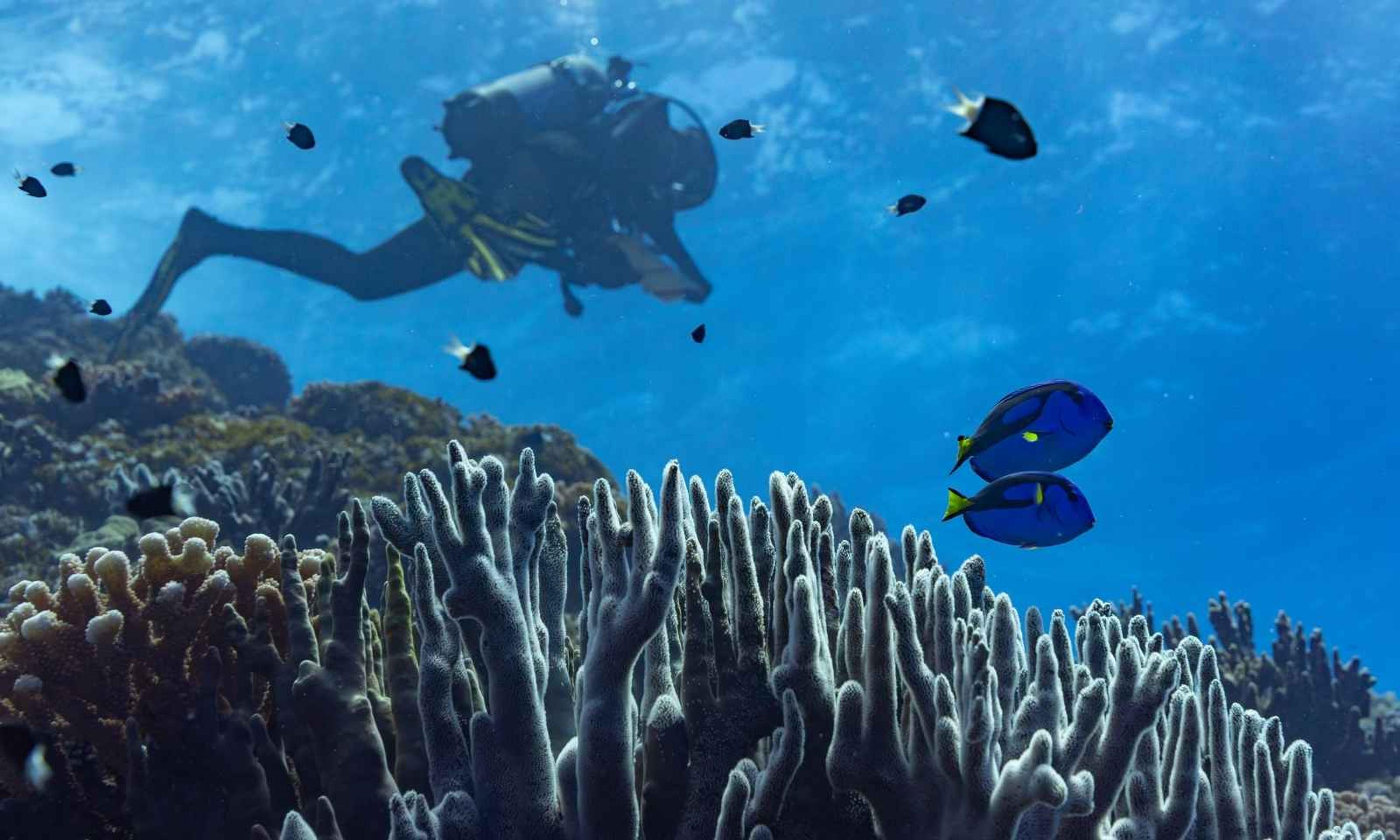
A tang fish swims in the waters of Vot Tande, Vanuatu.
Photo/National Geographic Pristine Seas/Iñigo San Félix
Local leadership proves key as Vanuatu reefs thrive amid growing global coral crisis
While the world’s reefs face mass die-off, an expedition in Vanuatu has discovered that strong community management is helping protect some of the healthiest coral ecosystems on the planet.


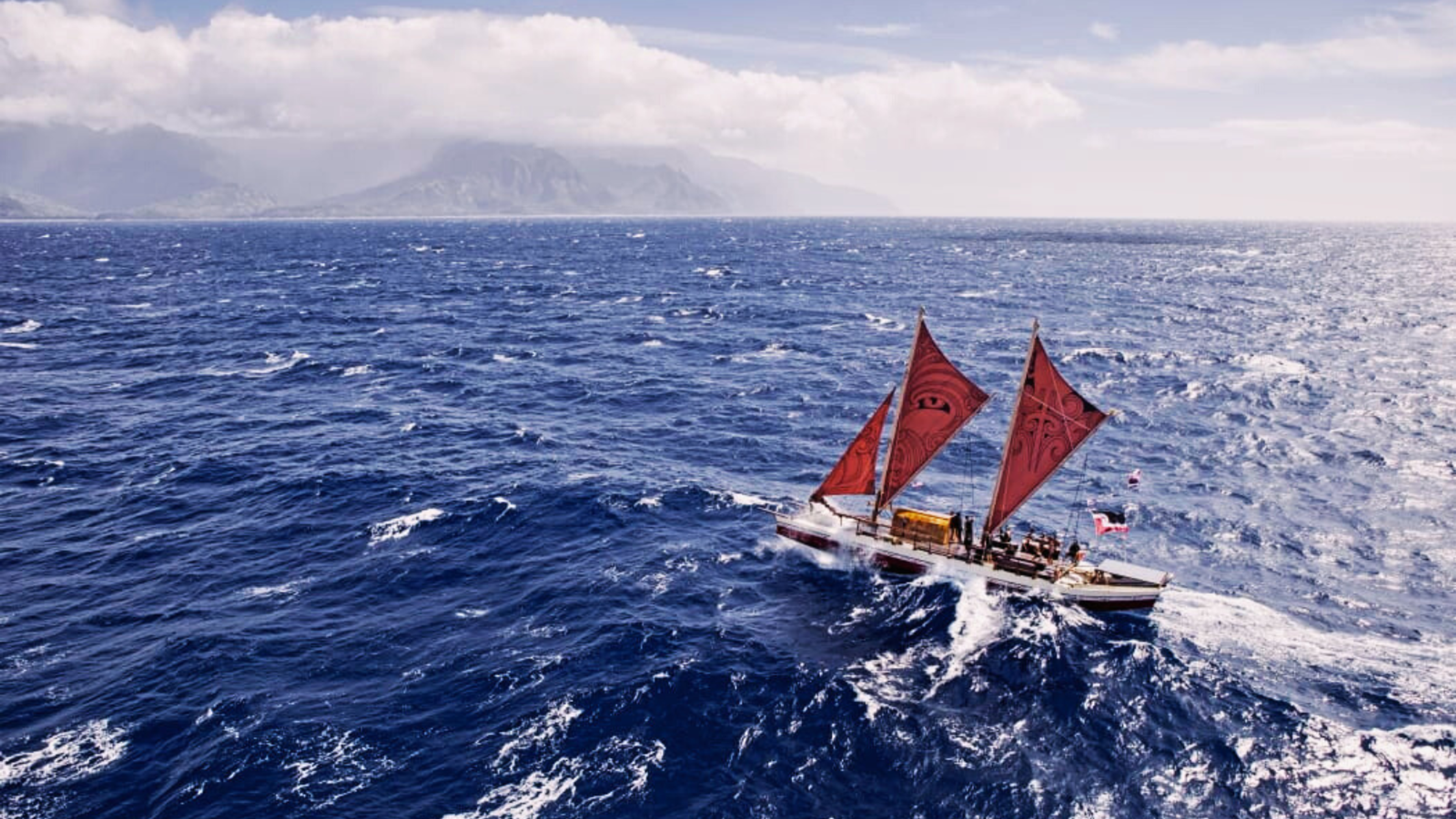
New Pacific toolkit brings ancestral knowledge into Aotearoa classrooms




New Pacific toolkit brings ancestral knowledge into Aotearoa classrooms

Despite warnings from scientists about the widespread death of warm-water coral reefs worldwide, researchers have recorded some of the healthiest and most diverse reefs ever seen in Vanuatu.
A scientific report reveals that the planet has reached a major climate tipping point, marked by the global die-off of warm-water corals due to marine heatwaves and acidification.
Since 2023, more than 80 per cent of reefs have experienced the most intense bleaching event on record, and in the last 50 years, half of all live coral cover has vanished.
Against this dire backdrop, the latest leg of National Geographic Pristine Seas’ (NGPS) Vanuatu expedition has found thriving, vibrant reefs across multiple sites, from Gaua to Vot Tande. The expedition is part of a Pacific-wide research programme that supports Vanuatu’s National Ocean Policy and marine spatial planning.
Paul Rose, the Head of Expeditions for NGPS, says the discoveries have been “better than could be expected”. He says Dr Eric Brown, a leading coral scientist who previously discovered the largest coral in the world in the Solomon Islands, joined the team.
Brown reported that the reefs in West Gaua were some of the most diverse and beautiful he has ever seen.
“All of the years of combined expertise and experience from a very high-performing, globally respected science team, for them to come up and say, ‘this is amazing’ against the backdrop of global dieback and concerns on climate change. If that isn't a case for increasing the marine protected areas in Vanuatu, I don't know what is.”
Listen to Paul Rose’s full interview below.
Earlier Pristine Seas missions this year surveyed Tuvalu and Fiji, using deep sea technology and community partnerships to map biodiversity and support conservation efforts.
In Vanuatu, the team is working with local communities and chiefs to gather information about the nation’s rich marine ecosystems. Rose says Vot Tande, the northernmost site of the mission, was a high priority but presented challenges.
“[It’s a] tiny dot of an island, only 800 metres long. The landing was difficult, but we managed to get Chris Thompson, our lead scientist and bird expert ashore, and he did a complete bird count. [Vot Tande] didn't offer much shelter, much leave from the seas… but we did really well,” he says.
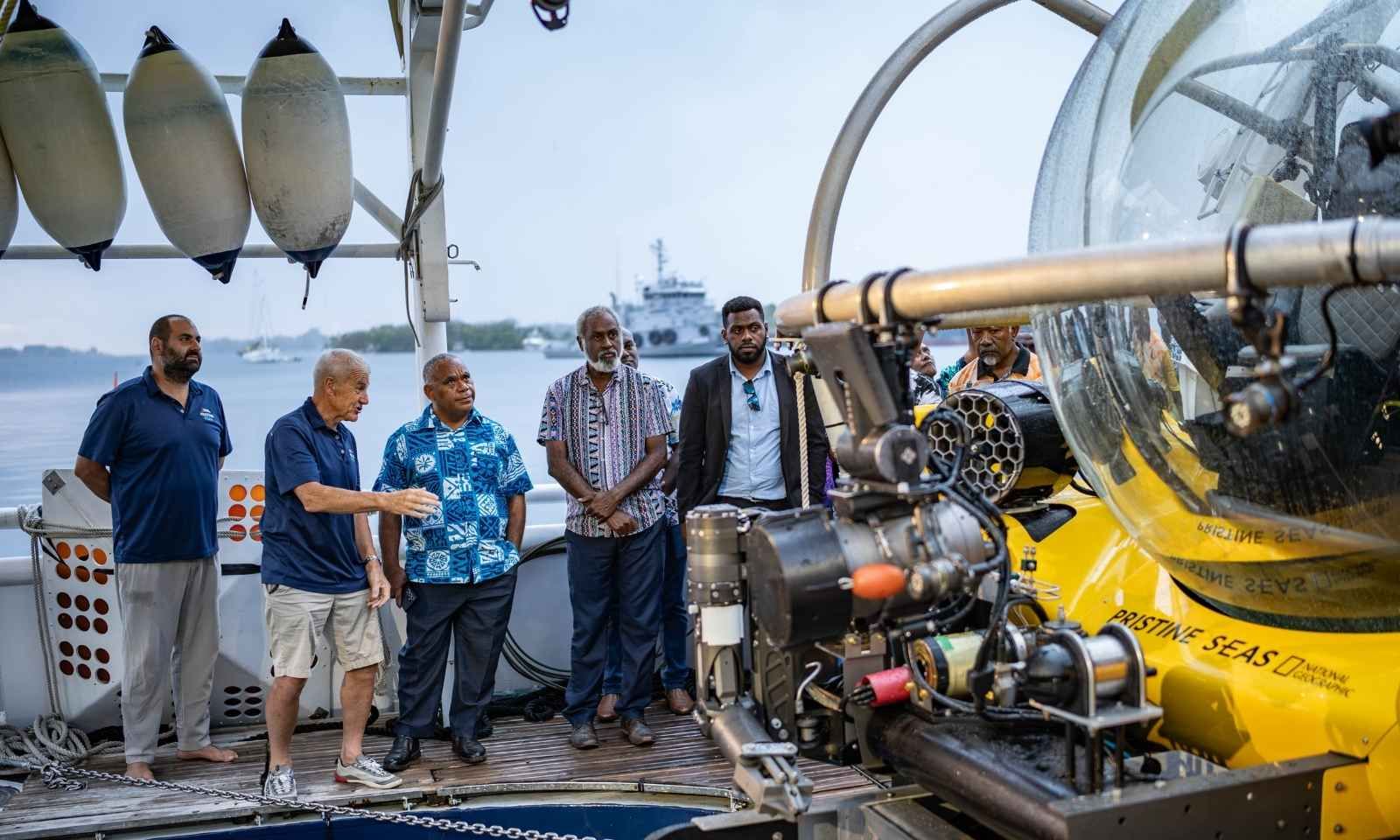
National Geographic Pristine Seas expedition leader for Vanuatu Paul Rose (second from left) shows members of the Vanuatu government, including Prime Minister Jotham Napat, the Argonauta, Pristine Seas’ submersible. Photo/National Geographic Pristine Seas/Marino Evans Vakatini
“[Vot Tande’s] very beautiful, high fish biomass, sharks, pelagic fish all over, and a very little sign of cold, disease or any bleaching. This was really beautiful. It's never been inhabited and it had a sense of truly wild places,” Rose says.
“That's how we started [NGPS], to find, explore and help protect the last wild places in the ocean. So Vot Tande was amazing, a very pleasant surprise.”
Rose says Moto Lava and Ureparapara show strong signs of sustainable local management, reflected in healthy fish populations and coral cover. Rose adds that the role of community leadership plays a major part in these successes.
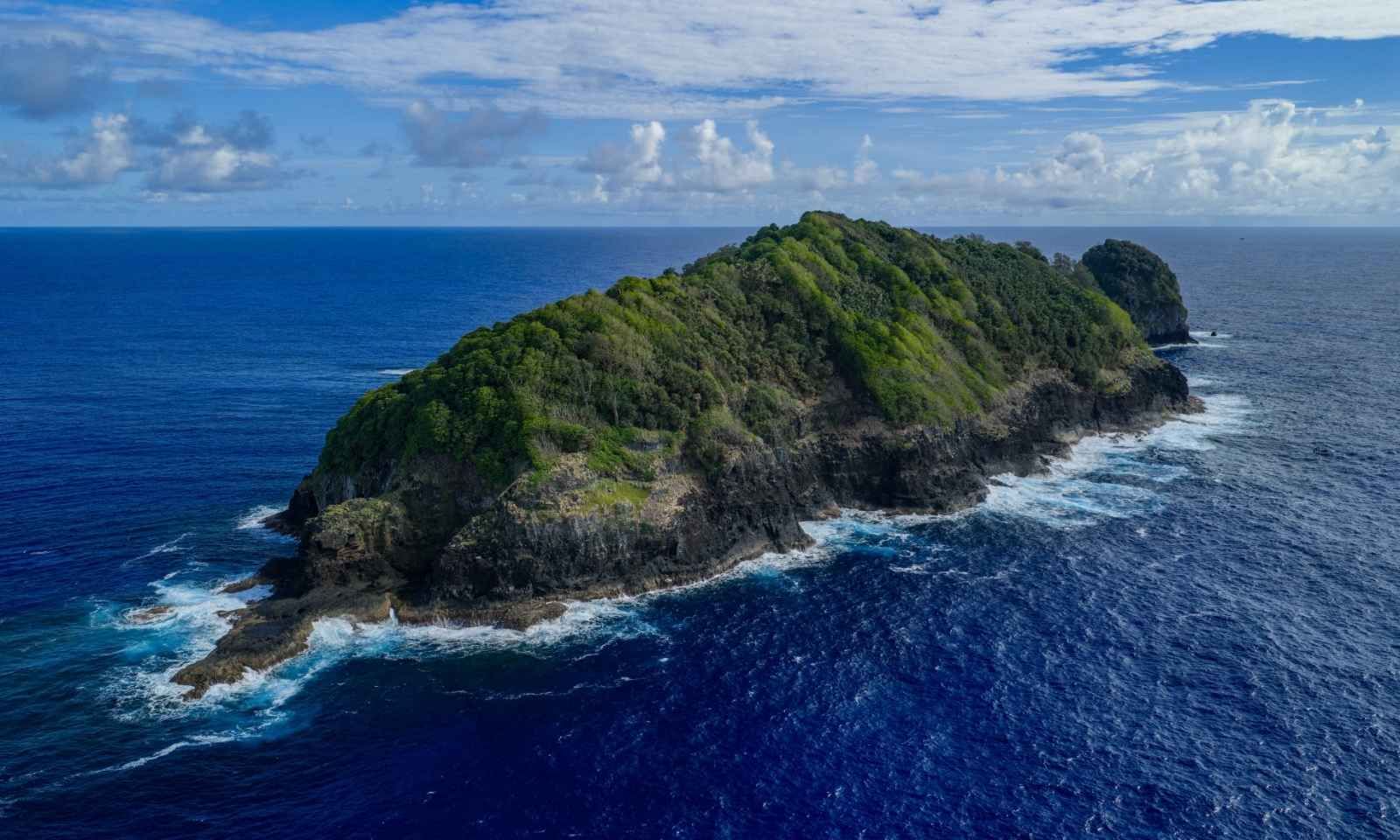
An aerial view of Vot Tande, Vanuatu. Photo/National Geographic Pristine Seas/Caitlin Bailey
But while there were many uplifting discoveries, the Reef Islands, or Rowa Islands, present a stark contrast. Rose urges the need for effective management in small, uninhabited atoll, which appears to be “at that tipping point”.
“We learned from the great people at Ureparapara that in the 1970s, it used to be managed by [them]. Then around about 2000, it was handed over to a development group and other islands who were looking to develop the islands.”
“There was confusion over who had the rights of access to fishing and ownership. And that meant it was an open door, a free for all. Everybody was fishing there and it's not in good shape. So it's a good example of when ocean resources are locally managed effectively, they do well.”
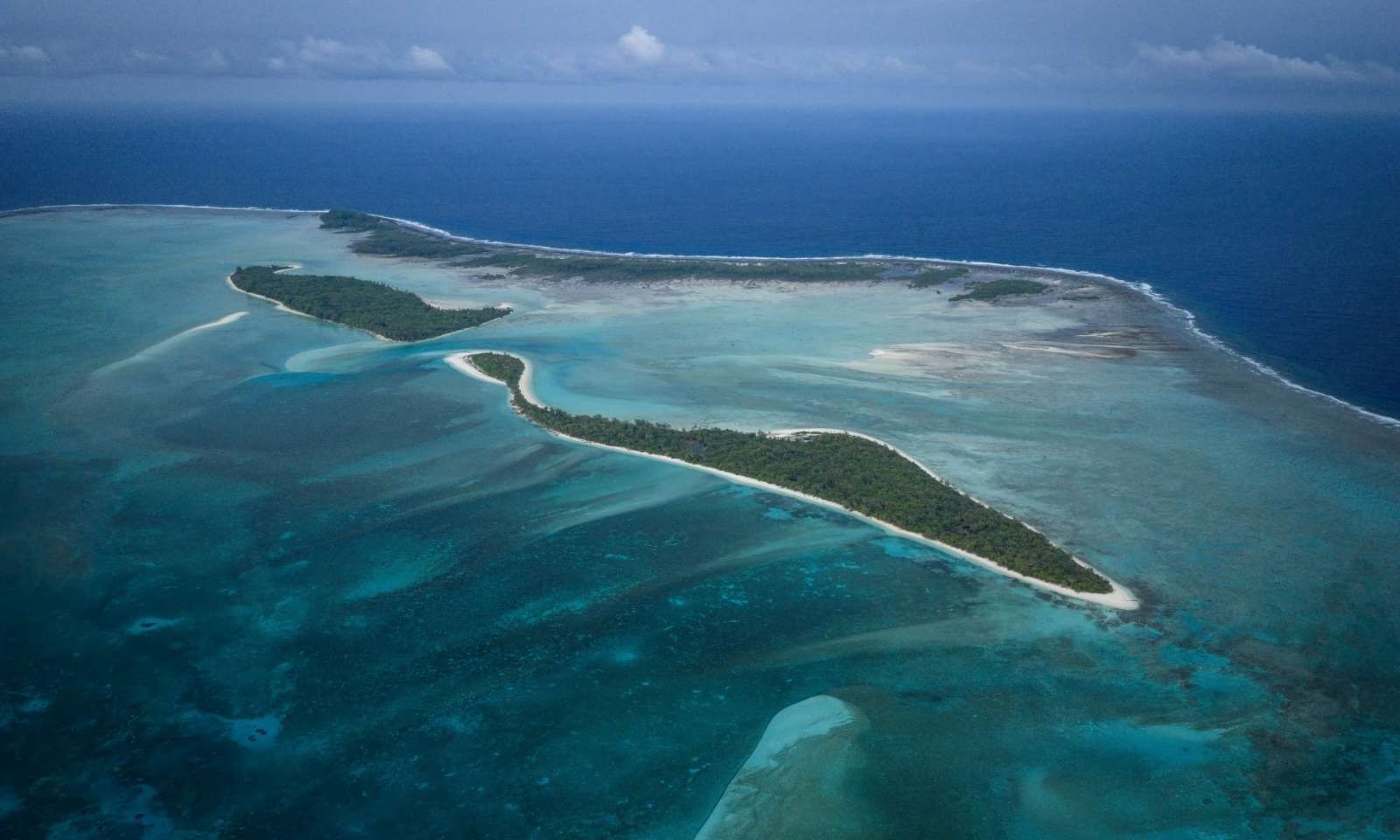
An aerial view of Rowa Islands atoll, Vanuatu. Photo/National Geographic Pristine Seas/Brett Kuxhausen
“But as soon as it becomes a bit messy, they degrade. So we felt that the Reef Islands, as beautiful as they are for bird life and the general look of them from the surface, once underwater, they do need good management and it's an urgent case,” Rose says.
The expedition team is now entering its final stage of its fieldwork in Vanuatu, with dives planned in the south before heading north to Pentecost for a major community event.
The team will showcase how a marine protected area can transform a depleted reef into a thriving ecosystem within five years, using the Pentecost site as an example of conservation success.
Afterwards, the Pristine Seas team will conclude operations in Port Vila with a post-expedition celebration, bringing together scientists, chiefs and community leaders to reflect on the discoveries made.